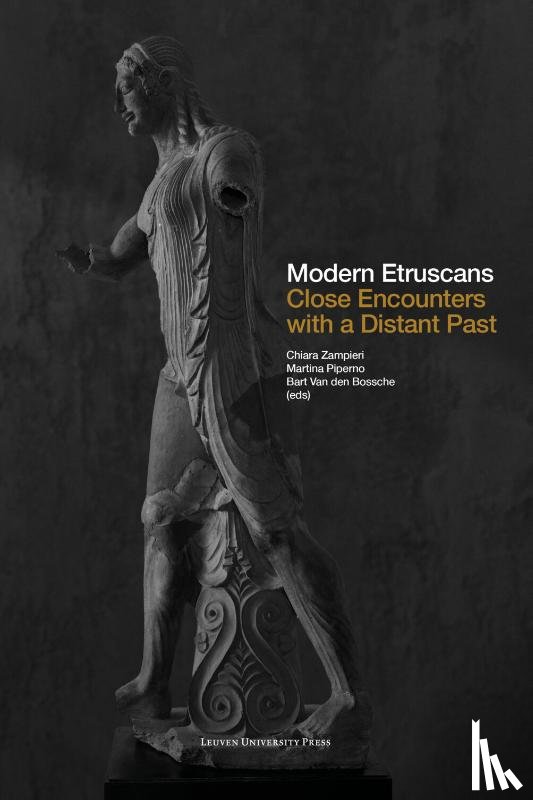Omschrijving
New insights on the reception of Etruscan antiquity in the modernist period. “L’Étrurie est à la mode”, French archaeologist Salomon Reinach bluntly stated in 1927. Since the beginning of the nineteenth century, Etruria had not only been attracting the attention of archaeologists and specialists of all sorts, but it had also been a fascinating and, in some cases, captivating destination for poets, novelists, painters and sculptors from all over Europe. This volume deals with the impact of the constantly expanding knowledge on the Etruscans and their mysterious civilisation on Italian, French, English, and German literature, arts and culture, with particular regard to the modernist period (1890–1950). The volume brings a distinctive point of view to the subject by approaching it from an interdisciplinary and comparative perspective, and by looking at a quite diverse range of topics and artefacts, which includes, but is not limited to, the study of drawings, art works, travel essays, novels, cooking recipes, schoolbooks, photographs, and movies.
By exploring a new paradigm to understand ancient cultures, beyond the traditional ideas and models of “reception of the classics”, and by challenging the alleged fracture between the so-called “two cultures” of humanities and natural sciences, Modern Etruscans will be of interest to scholars from various disciplines. Designed as a learning tool for university courses on the interplay between literature and science in the twentieth century, it is suited as recommended reading for students in the humanities. “L’Étrurie est à la mode”, French archaeologist Salomon Reinach bluntly stated in 1927. Since the beginning of the nineteenth century, Etruria had not only been attracting the attention of archaeologists and specialists of all sorts, but it had also been a fascinating and, in some cases, captivating destination for poets, novelists, painters and sculptors from all over Europe. This volume deals with the impact of the constantly expanding knowledge on the Etruscans and their mysterious civilisation on Italian, French, English, and German literature, arts and culture, with particular regard to the modernist period (1890–1950). The volume brings a distinctive point of view to the subject by approaching it from an interdisciplinary and comparative perspective, and by looking at a quite diverse range of topics and artefacts, which includes, but is not limited to, the study of drawings, art works, travel essays, novels, cooking recipes, schoolbooks, photographs, and movies.
By exploring a new paradigm to understand ancient cultures, beyond the traditional ideas and models of “reception of the classics”, and by challenging the alleged fracture between the so-called “two cultures” of humanities and natural sciences, Modern Etruscans will be of interest to scholars from various disciplines. Designed as a learning tool for university courses on the interplay between literature and science in the twentieth century, it is suited as recommended reading for students in the humanities. 9 Introduction
Chiara Zampieri, Martina Piperno and Bart Van den Bossche
23 Etruscans, Victorians, and After: The Modern Sense of Beauty
Francesca Orestano
43 The ‘Walking Apollo’: From Archaeological Dissemination to Literary Knowledge
Chiara Zampieri
63 Cooking by the Book: Travel Writing and Etruscan Food Culture in the Interwar Period
Bart Van den Bossche
81 Etruscans in Unexpected Places: Space, Temporality and Visual Agency
Lisa C. Pieraccini
97 The Demonisation of the Etruscans: From Alfred Grünwedel to German Schoolbooks
Martin Miller
115 Mr Lawrence and Lady Larthia: D. H. Lawrence as an Apprentice Etruscologist
Marie-Laurence Haack
127 Etruscan Studies and the Infernal Landscape in Vincenzo Cardarelli’s prose d’arte
Gennaro Ambrosino
147 The Problem of Distance: Giorgio Bassani, The Etruscans and the Limits of Compassion
Martina Piperno
163 A Compromised Antiquity: The Post-war Italian Rejection of the Etruscan Past
Andrea Avalli
181 About the Authors
185 Index


